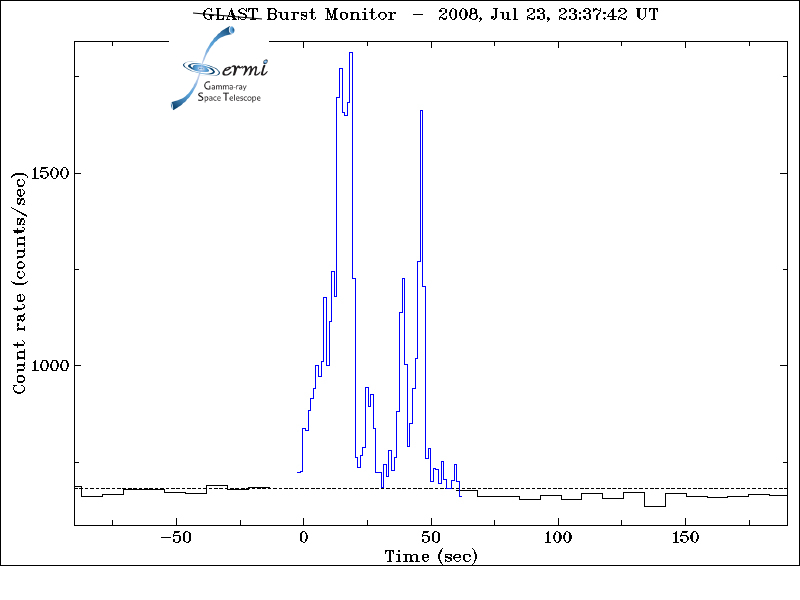
 Credit:NASA
Credit:NASA
It's Here! Say Hello to Fermi
The sky we see each night is very stable on timescales of millenia. But if we had gamma-ray eyes we'd see a transient sky that changes on times of seconds to days. Previous gamma-ray telescopes (like the Compton Gamma-Ray Observatory, CGRO) made astonishing discoveries (like the istropism of gamma-ray bursts, and the detection of startling new populations of gamma-ray ray sources). But even CGRO did not have sufficient sensitivity to fully sample the gamma-ray universe and to address whether the sources of such enormously energetic radiation require an entirely new type of physics. NASA's newest gamma-ray telescope, named in honor of the great physicist Enrico Fermi, will help provide these fundamental answers and will undoubtedly raise unanticipated questions. The Fermi Gamma-Ray Space Telescope (formerly known as GLAST, the Gamma-Ray Large Area Space Telescope) covers a gamma-ray energy range that's a factor of 10 broader than CGRO, while covering four times the sky area. Fermi has just completed its initial checkout phase and is now ready for full science operations: detecting gamma-ray bursts, like the one shown above (which was detected by the GBM instrument on Fermi), and mapping out the secrets of the gamma-ray sky with Fermi's LAT instrument. New mysteries abound, stay tuned.
Published: August 26, 2008
<
HEA Dictionary ● Archive
● Search HEAPOW
● Other Languages
● HEAPOW on Facebook
● Download all Images
● Education ● HEAD
>
Each week the HEASARC
brings you new, exciting and beautiful images from X-ray and Gamma ray
astronomy. Check back each week and be sure to check out the HEAPOW archive!
Page Author: Dr. Michael F. Corcoran
Last modified Tuesday, 27-Feb-2024 10:15:14 EST


